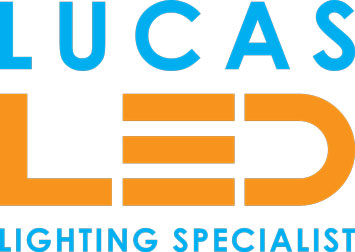What is the best LED colour temperature?

What is the colour temperature?
The colour temperature, or more technically Correlated Colour Temperature (CCT), is a measurement that essentially describes the appearance of light. In other words, a light's colour temperature determines its hue - the warmer the light, the more yellowish/orangey (or even reddish) it will appear. On the other side of the scale, what we consider cold light would have a distinctively bluish tint to it. For example, a so-called soft white light is produced by candles and cool white light is what daylight looks like.
Colour temperature is measured in Kelvins (K). But there's a catch - the higher the temperature, the colder the light would appear. For example, the light given off by a light bulb with CCT of 3000K is considered warmer than a 5000K light. This might seem confusing at first but is easy to remember when you get used to it. If you need neutral light, aim for approximately white 4000K.
Why is light's colour temperature important?
The answer is simple - lights with different colour temperatures have varied effects on our bodies. Therefore, choosing the right colour temperature is crucial for our mood and has a great impact on our day cycle or even sleep patterns. So it's not just a simple matter of aesthetics.
We all know that natural light gives us energy. That's because a large portion of it are blue light waves, to which our bodies react by boosting serotonin production. This helps us stay awake, alert and focused. And that's the main reason why workplaces are full of bright cold lights.
When the light reaching us has no blue wavelengths, our brains start producing melatonin. That's one of the reasons we feel relaxed and drowsy when there's only warm light around. So we shouldn't pick higher colour temperature light bulbs for relaxation areas, especially bedrooms.

What are the colour temperatures of artificial light?
This depends on the type of lighting used. Here are some examples of commonly used light sources:
- A traditional incandescent light bulb produces warm white light with colour temperatures between 2400-3300K (depending on the type);
- Halogen bulbs give off warm white or neutral light with CCT of 3000-4000K;
- Soft fluorescent (CFL) light bulbs and tubes have colour temperatures between 2700-3000K;
- Standard CFLs work at CCT of 3500K;
- Cool white fluorescent lights popular in office buildings come with colour temperatures ranging from 4000 to 6000K;
- LED lighting comes in anything between warm white (2700K and lower) to cool white that recreates natural daylight (6500+K). However, LED colour temperatures can be changed freely between their initial value and 0%, if you use dimmable light sources and a compatible dimmer switch.

Does colour temperature affect brightness?
It does in LED lights - the higher the colour temperature, the whiter and brighter they get, as they produce more and more Lumens. And vice versa - lower brightness means warmer appearance.
Lumens are metric units that allow accurate measurement of how bright the light is. They're used instead of Watts, as there's no longer a simple correlation between wattage and how bright a light source is. For example, 6W LED lamps can be as bright as a 60W incandescent bulb.
There's no such codependence when it comes to classic CFLs - whiter lighting (higher kelvin temperature) doesn't necessarily mean higher lumen count.
What colour temperature is the best for LED light?
To be honest, there's really no right or wrong answer here, as dimmable LEDs can change colour temperature on the fly. So you can just buy ones with high CCT and adjust them later. However, they are noticeably more expensive and require compatible fixtures/dimmers to realize their potential. When picking up a standard LED bulb (or any other light source based on LED technology) it's good to follow some basic rules regarding getting the right colour temperature lighting for a given room. Let's take a closer look at them.
Kitchen
Kitchens are essentially workspaces and us such require brighter lighting - especially for the counters. The task lighting for the counters should be kept in the daylight colour temperature, as it's important to stay focused, e.g., when you're chopping food. If the kitchen doubles as a dining room the table should be illuminated with lower colour temperature light - this will balance-out the lighting and create a pleasant atmosphere for the family meals. The overall brightness and CCT of the room should be kept at 4000-8000 Lumens and 2700-5000K respectively.
Living room
As a multifunctional room, it should be equipped with layered LED lighting that can be easily adjusted to suit a given occasion. It should have a mixture of overhead general lighting and accent wall/standing lamps that will illuminate specific areas. You can mix and match different colour temperatures, but they all should be kept in the warm white or neutral range - cool white light that mimics daylight won't let you relax properly. In summary, living rooms should utilize lighting with 2200-3000 on the Kelvin scale and 1500-3000 Lumens.

Home office
Your goal here is to maximize productivity - the task lighting should be close to natural daylight (5000+K). The general ambient lighting can be a bit warmer, but not going below neutral. While placing lamps, remember to choose positions that won't create glares and reflections on the computer screen. All of it should be rather bright, totalling at 3000-6000 Lumens.
Dining room
A separate dining room is a place that ought to provide you with a cosy atmosphere that'll help you enjoy your meals. That's why it shouldn't have excess lighting - a single overhead lamp hanging in the middle of the table will do just fine. It's best when it provides extra warm white light (Kelvin rating of 2200-3000) that isn't too bright (about 800 Lumens per bulb). Suggested total brightness is 3000-6000 Lumens.
Bathroom
It should be lit rather brightly, but a ceiling lamp isn't a must - most bathrooms are separated into smaller areas that would need their own lighting. For mirrors, the lighting should be bright and on the cooler part of the CCT scale, while bathtubs don't need more than warm white with moderate glow. The shower cabin is a bit more complicated, as the light's colour temperature depends on when you use it. When showering is the first thing you do in the morning, daylight colour temperature will help you shake off sleep faster. If you prefer evening showers, the lighting can be way softer. All points of illumination should sum up to 3000-5000K and about 4000-8000 Lumens.

Bedroom
Whatever you do to the rest of the house, the bedroom ought to be the calmest, most peaceful and relaxing part of it. Any blue lighting is strictly forbidden here - even the best visual effect isn't worth messing up your sleep schedule. If you're a bedtime reader, pick a neutral white reading lamp. For all the rest, stick to warm white, toned down lighting that doesn't go past 3000K and overall brightness of 1500-4000 Lumens.
Colour temperature - more important than you might think
Choosing between warm white and cool white isn't just a matter of aesthetics - the spectrum of light's wavelengths can have various effects on our bodies. As such, we should always pay close attention when browsing for lighting sources for a given room. Warm, orange-yellow ones are the best for relaxation zones, while cool bluest should be reserved for working space. White LED lights can have varied CCT and some of them are dimmable, which enables a lot more flexibility in matching the final effect to personal taste. If you experience any problems with choosing the best lighting option for you or can't make it work correctly, LucasLED is here for you. Check our LED Strip Lights category. We can help you pick the best option for your home/office and set it up properly.














